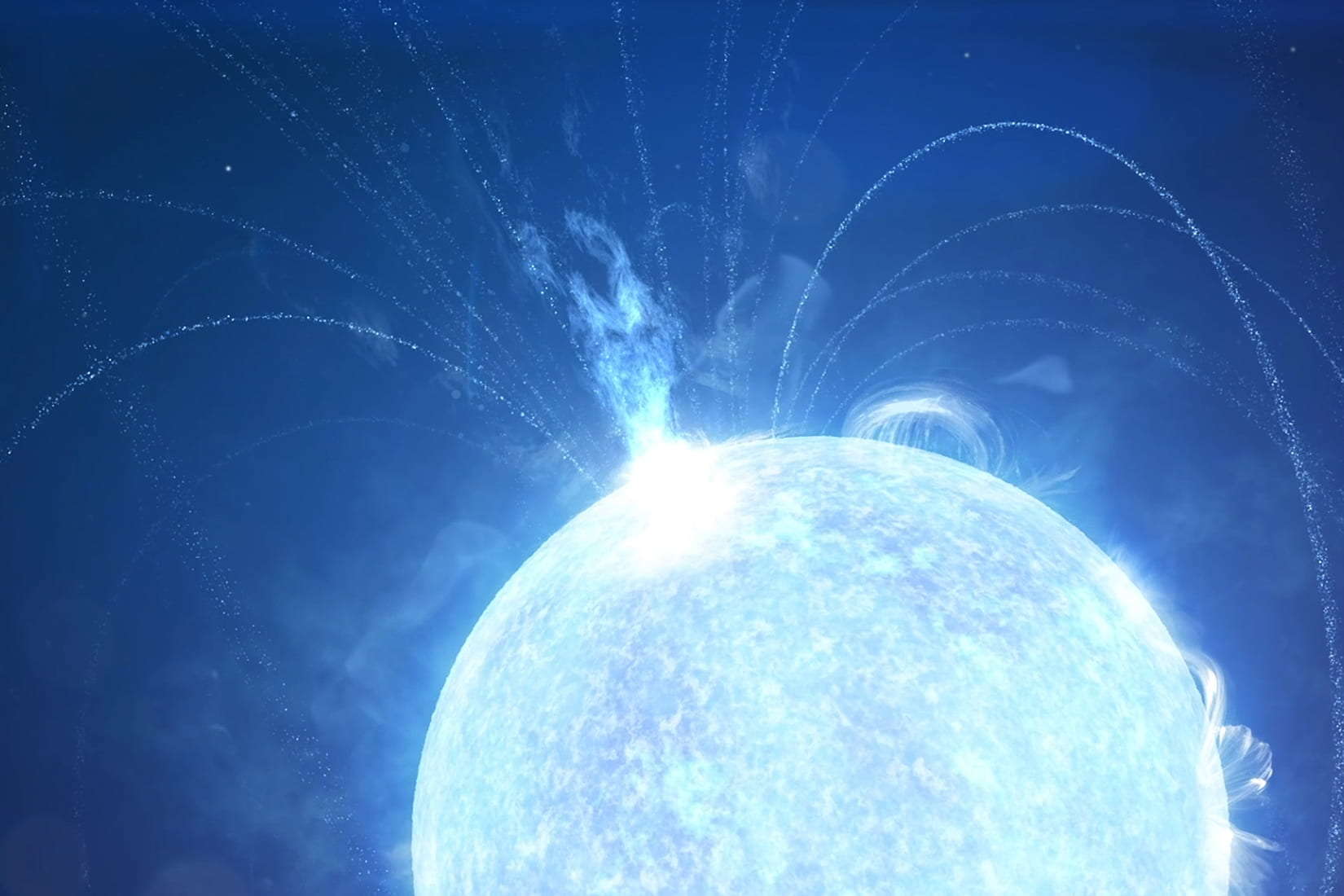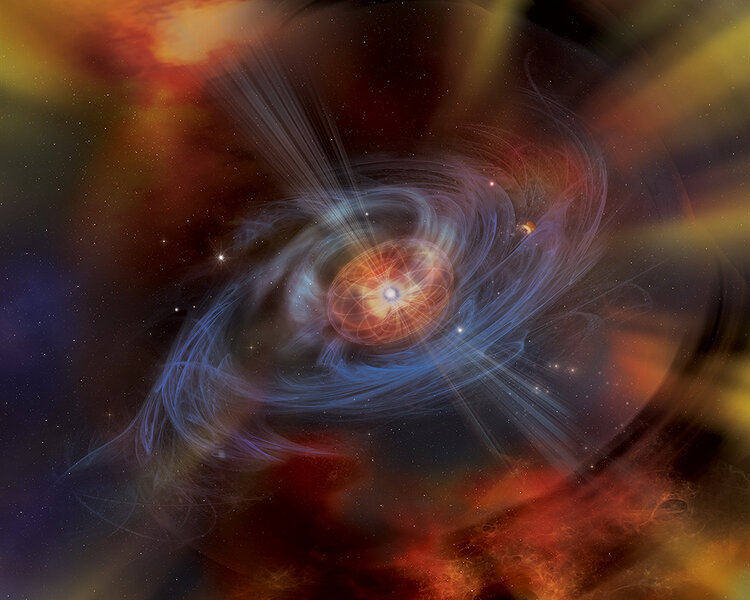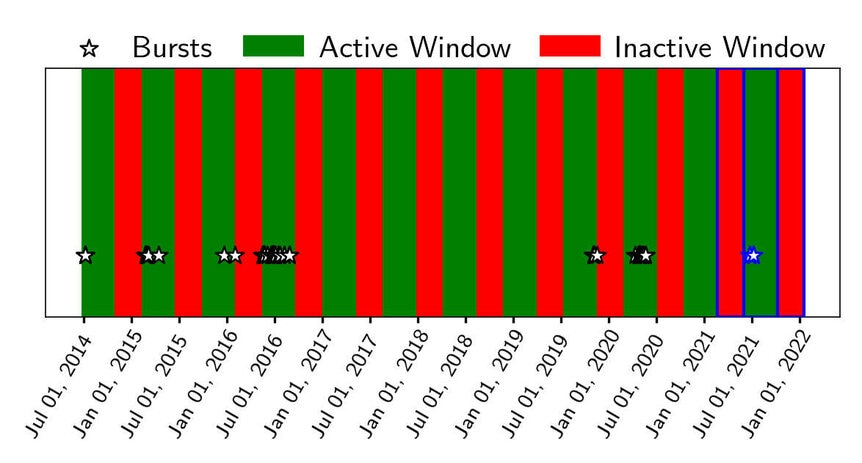Create a free profile to get unlimited access to exclusive videos, sweepstakes, and more!
A magnetar is outbursting again right on schedule

Magnetars are bizarre and terrifying objects, capable of immense explosions that are detectable hundreds of millions of light years away. We also don’t know that much about them.
A team of scientists, though, had their own flash of insight that provides another clue on how these tiny but mighty monsters work. They found a magnetar in our galaxy that has predictable periodic outbursts.
Kinda.
OK, let’s back up just a hair. Magnetars are a kind of neutron star, formed when a massive star explodes at the end of its life. The outer part of the star explodes outward as a supernova, but the core of the star collapses. If the star is extremely massive the core will become a black hole, but for lighter weight stars (8 – 15 times the Sun’s mass or so) the core collapse stops when protons and electrons (and antineutrinos) are smashed together to form neutrons.
What’s left is an extremely dense, extremely hot, extremely small, extremely magnetic beast called a neutron star. They can have a density of a hundred billion tons per cubic centimeter (imagine all the cars in the U.S. compressed down to the size of a sugar cube), a surface gravity a billion times Earth’s, and a magnetic field trillions of times Earth’s as well. Some can top a quadrillion. A quadrillion.
Neutron stars like those at the top of their class magnetically are called magnetars. Their ridiculously strong magnetic fields and gravity can power phenomenal events from them. For example, in 2004 the blast wave from a huge burst of energy from a distant magnetar swept over the Earth and was so powerful that even from 50,000 light years away it partially ionized Earth’s upper atmosphere and compressed our magnetosphere.
They are also likely to be the power source behind fast radio bursts, mysterious energetic blasts of energy that last for a mere millisecond but are so strong we can detect them in other galaxies. Some of these magnetars burst once and we never hear from them again, while others repeat their behavior on predictable cycles. These were only recently discovered and are still fairly enigmatic.
And that brings us to SGR1935+2154, a magnetar in our own galaxy, located roughly 30,000 light years away from Earth (a quarter of the way across the Milky Way). The SGR in its name stands for soft gamma-ray repeater. Don’t let the word “soft” fool you, though. Gamma rays are the highest energy form of light, and can only be created in the most violent of processes: ultrastrong magnetic fields, radioactive decay, and the like. We use the word soft for gamma rays at the low end of their energy scale, but they’re still more energetic than “hard” X-rays.
SGR1935+2154 is known to blast out gamma rays, and to do so more than once. This is where the new research comes in: although the individual bursts of energy from the magnetar come at random times, they appear in predictable groupings, what the astronomers call windows.
It’s like a trash truck that only comes on Tuesdays, but at different times of the day. It might show up in the morning at 10:00 or 11:15, or even at 3:42 p.m., but always on a Tuesday.
Same thing here, except the window is several months long, the trash truck is actually a scary magnetar, and the loud noise of the machinery is actually a blast of gamma rays hundreds of times more luminous than the Sun.
What the astronomers noticed is that the gamma ray flashes were all clustered in four-month-long windows separated by three-month intervals of quiescence. They used data from the KONUS gamma-ray instrument on board the spacecraft WIND, launched in 1994 to observe the Sun’s solar wind. But it can detect flashes of energy from other objects, and has seen them from SGR1935+2154 since 2014.
Using clever statistical techniques, they were able to see the bursts were clustered together in time, with a three-month gap between clusters. Armed with that idea, they then made a prediction: The magnetar would start blasting away again on June 1, 2021 and should shut down once more in October.
And they were right. Or close enough: The three months before June 1 it was quiet, and the first burst was detected on June 24, three weeks into the window. Since then several more have been seen, including one as recently as July 6.
The important part will come in October, if the magnetar shuts down again. But given the pattern, this does seem to be the way to bet.
The big question: Why does it do this?
That’s not at all clear. The gigantic burst in 2004 (from a different magnetar called SGR 1806-20) was likely triggered by a seismic event in the crust that shook the magnetic field incredibly hard, causing it to fiercely accelerate subatomic particles swept up in it. This created a sharp release of energy on profoundly enormous scales. It’s possible that much smaller starquakes create these repeating bursts from SGR1945+2154, with periodicity caused by strain building up in the crust over time that’s released in a series of shocks.
Another source could be something in an elliptical orbit around the magnetar, maybe a cloud of particles that interacts with its magnetic field as it approaches, then fades as it recedes.
But these are guesses. The fact that the blasts are clustered is still a huge key into the mechanism behind the phenomenon. Importantly, SGR1935+2154 is also known to be a source of fast radio bursts, so any sort of clue to its nature should help unravel that mystery as well.
We’re not sure how magnetars form, how they behave, how they evolve, and how they eventually fade in strength. There are plenty of ideas, but these need to be tested against observations to see which ones can still stand, which ones are supported by what we see, and which are not.
This is common in new fields of astronomy, where we have more ideas than observations. But this new detection of windowing in the bursts should help astronomers filter through them. Magnetars are amazing objects, and capable of extreme outbursts. The more we know about them the better.





























